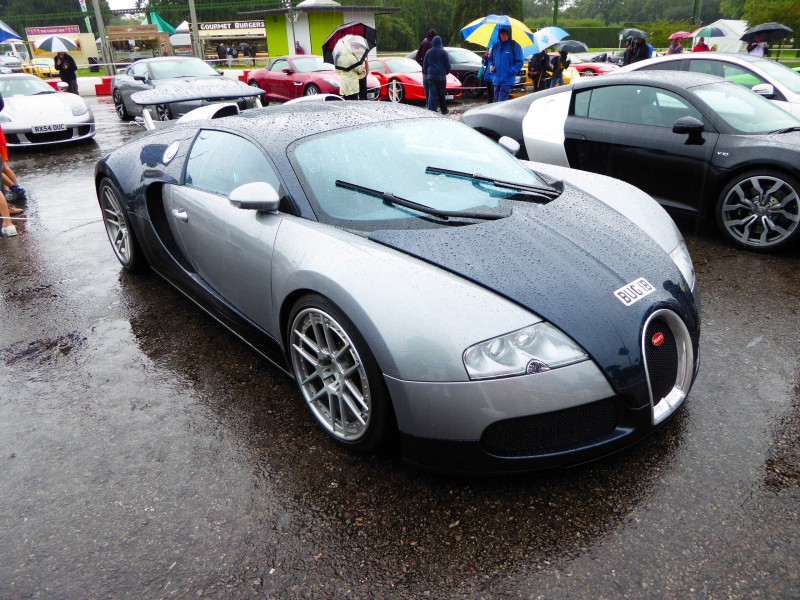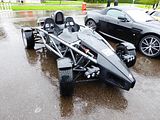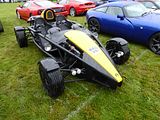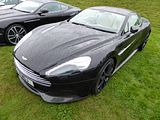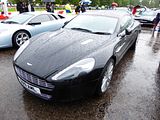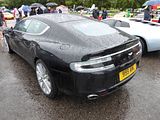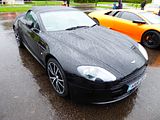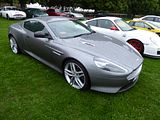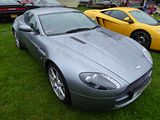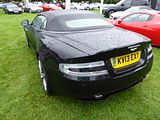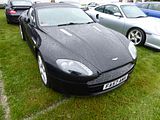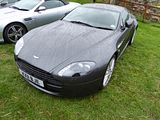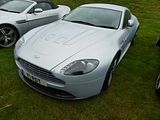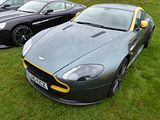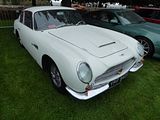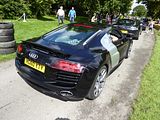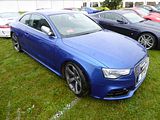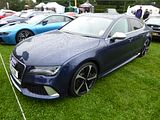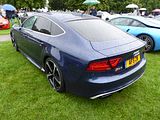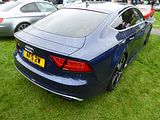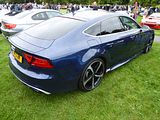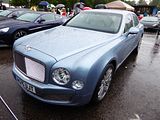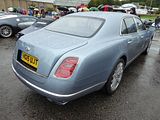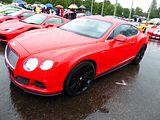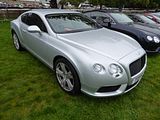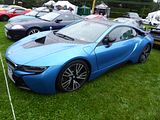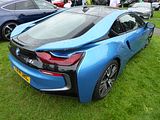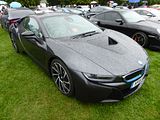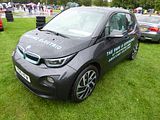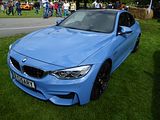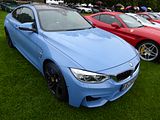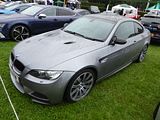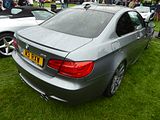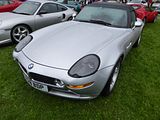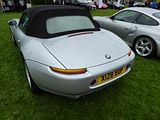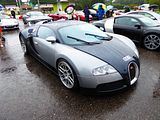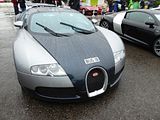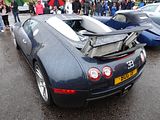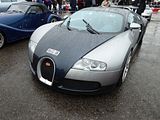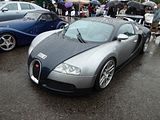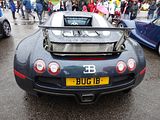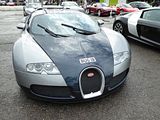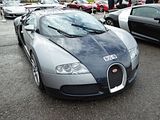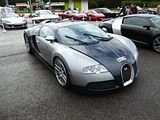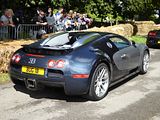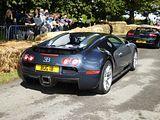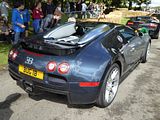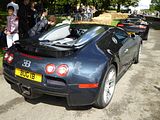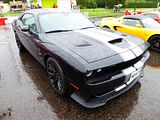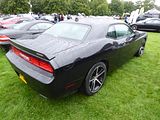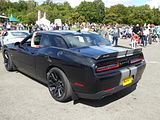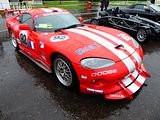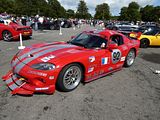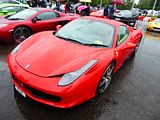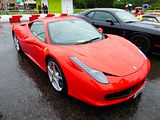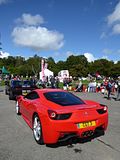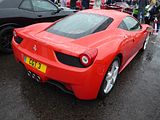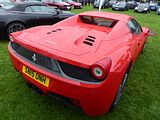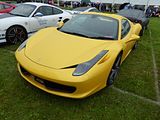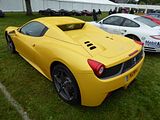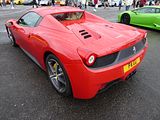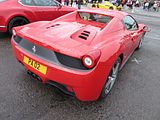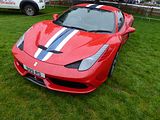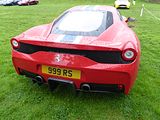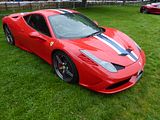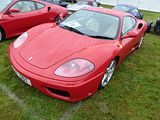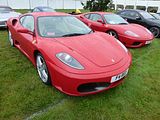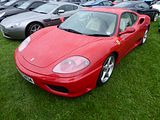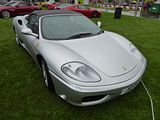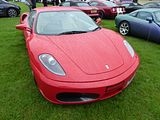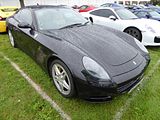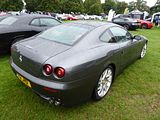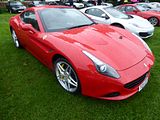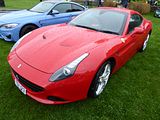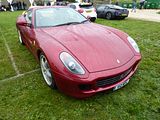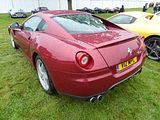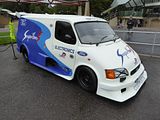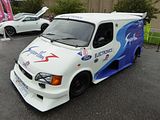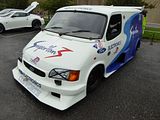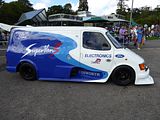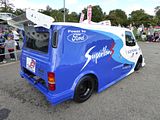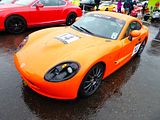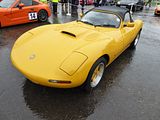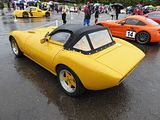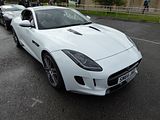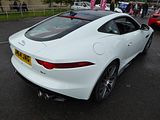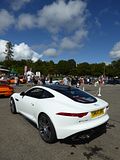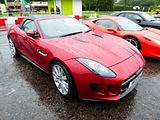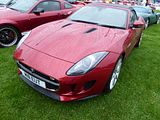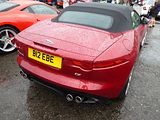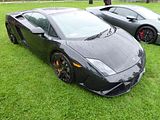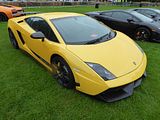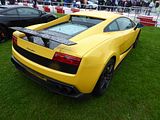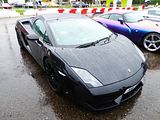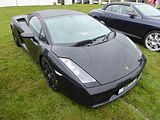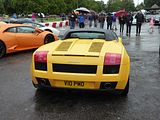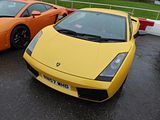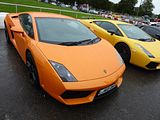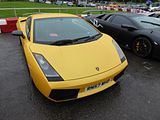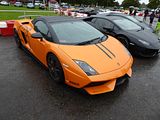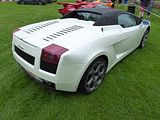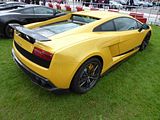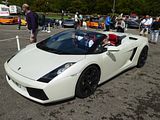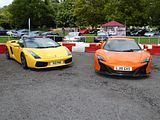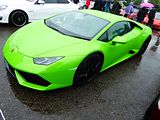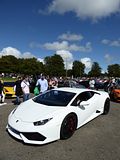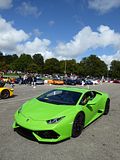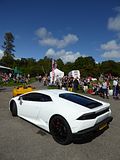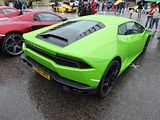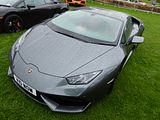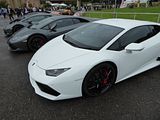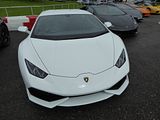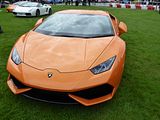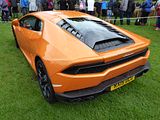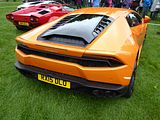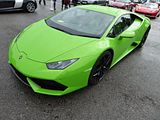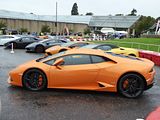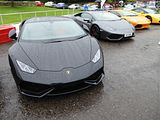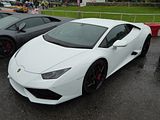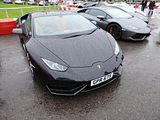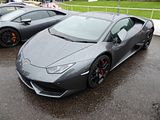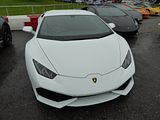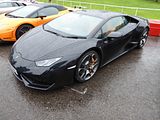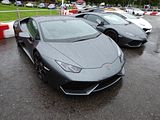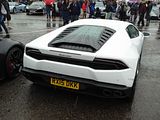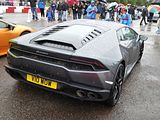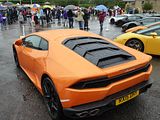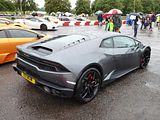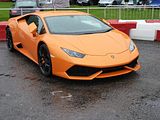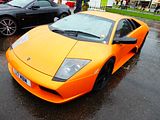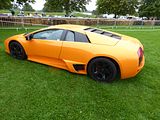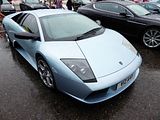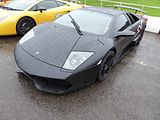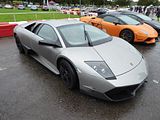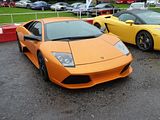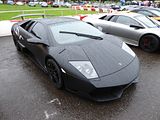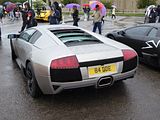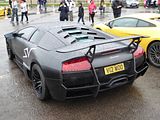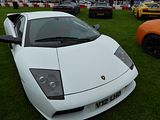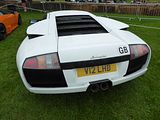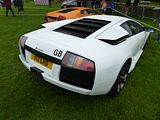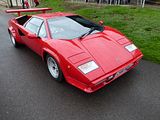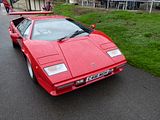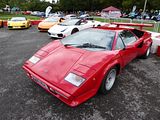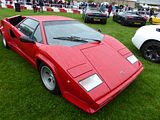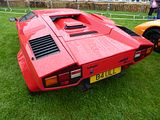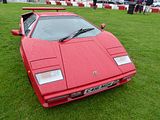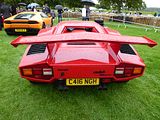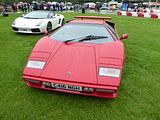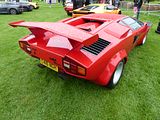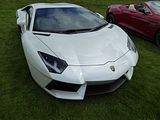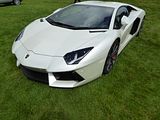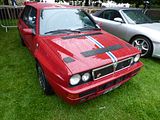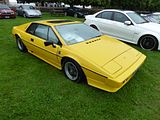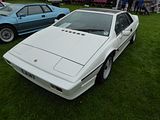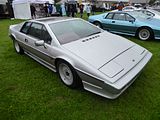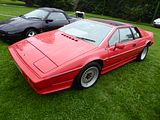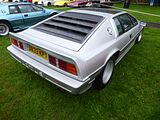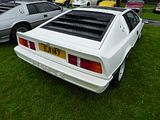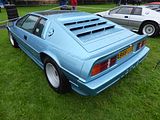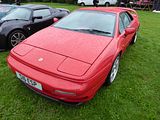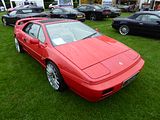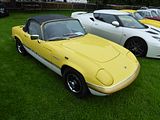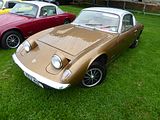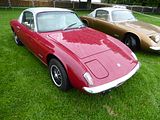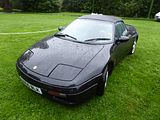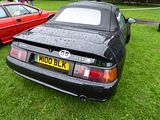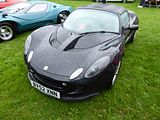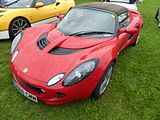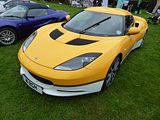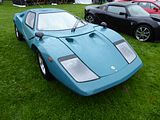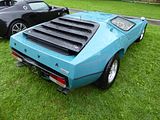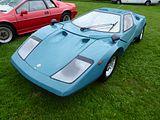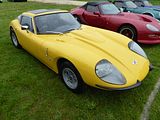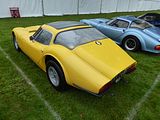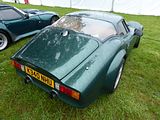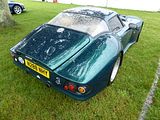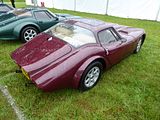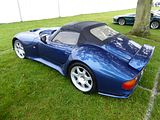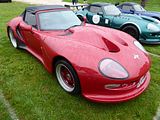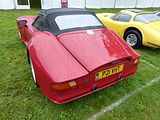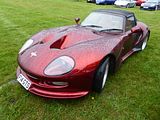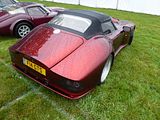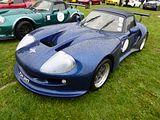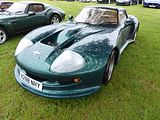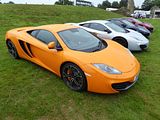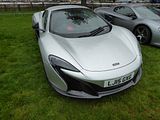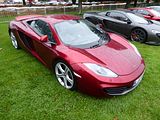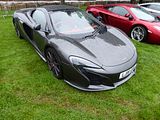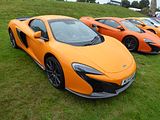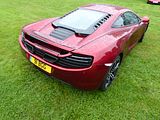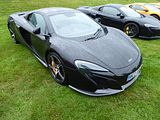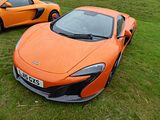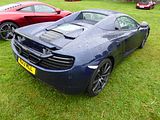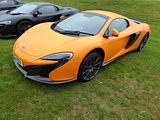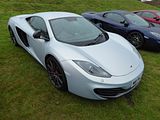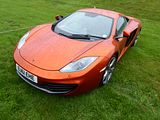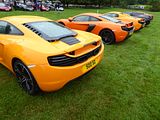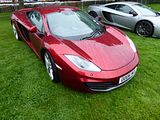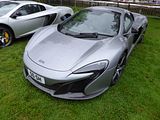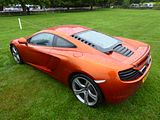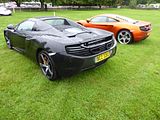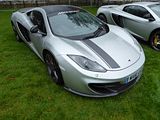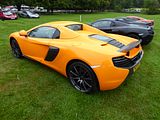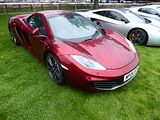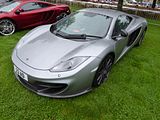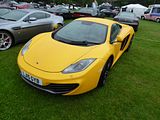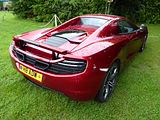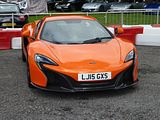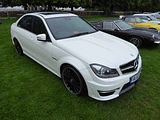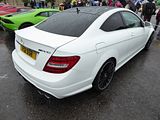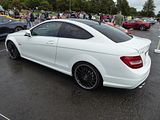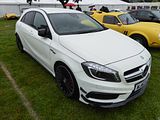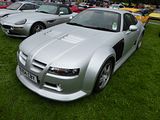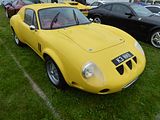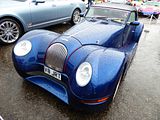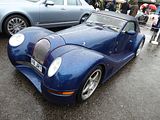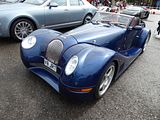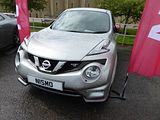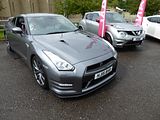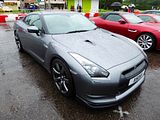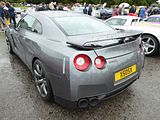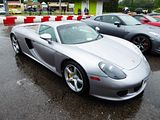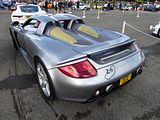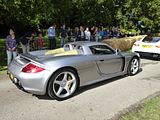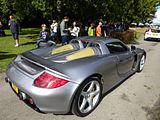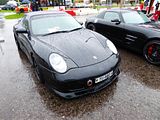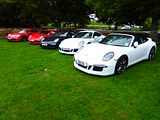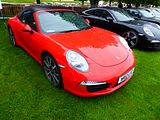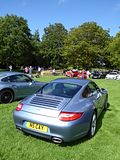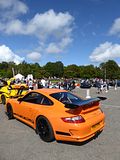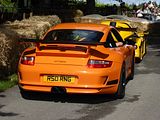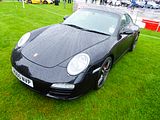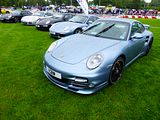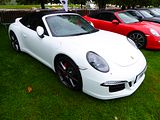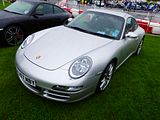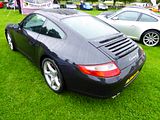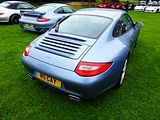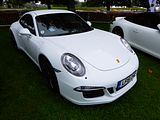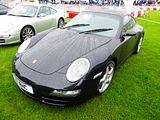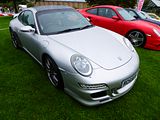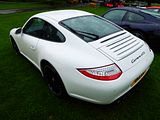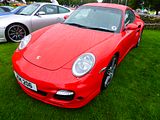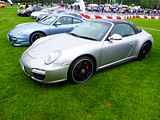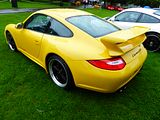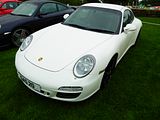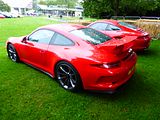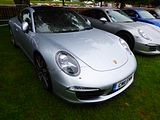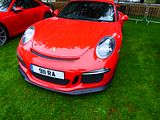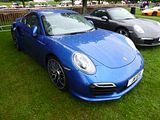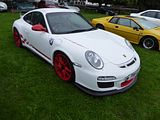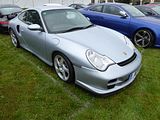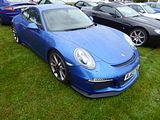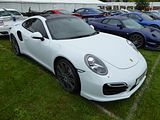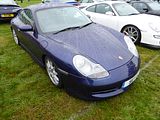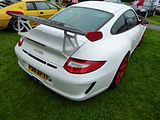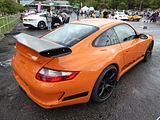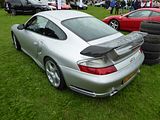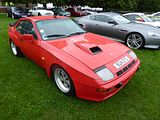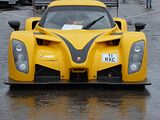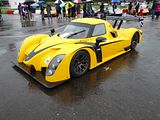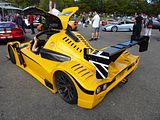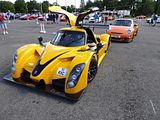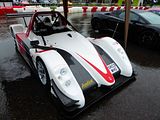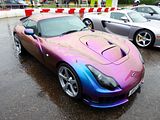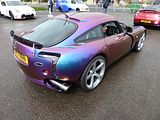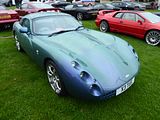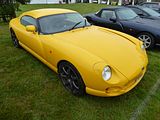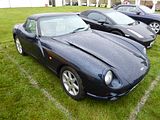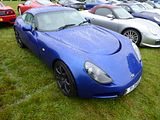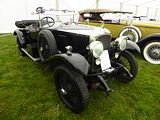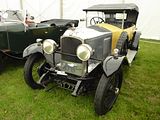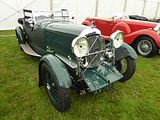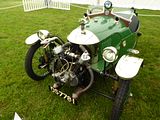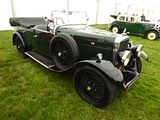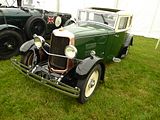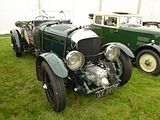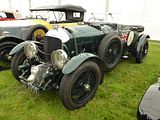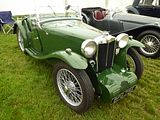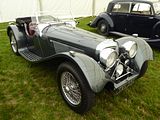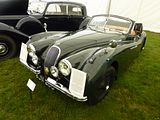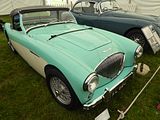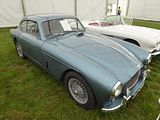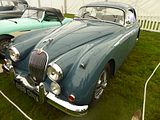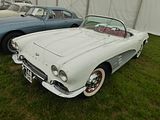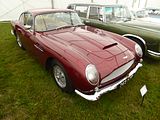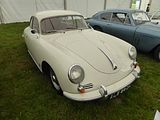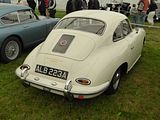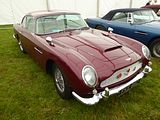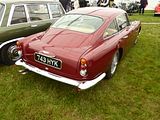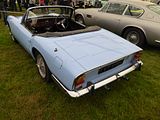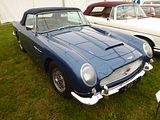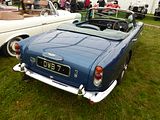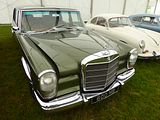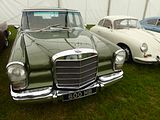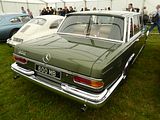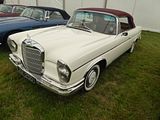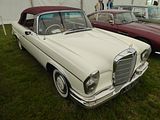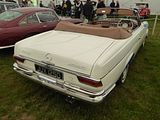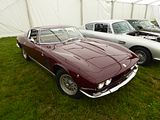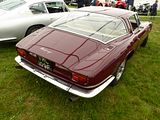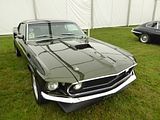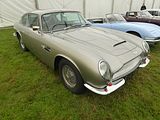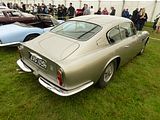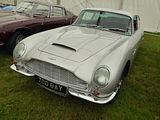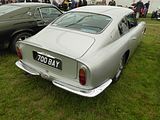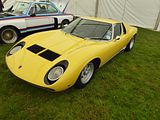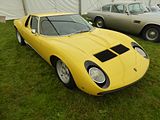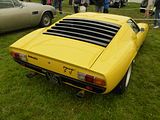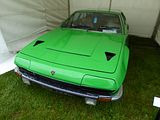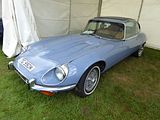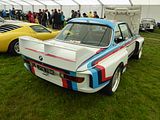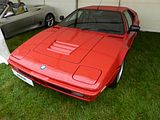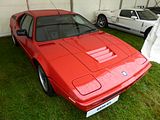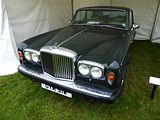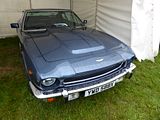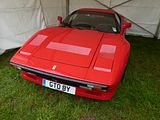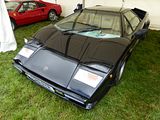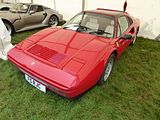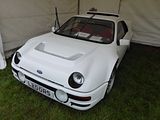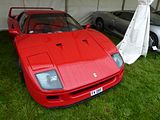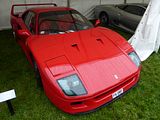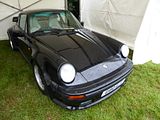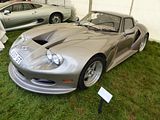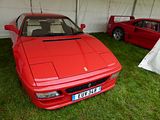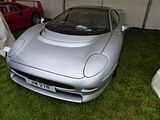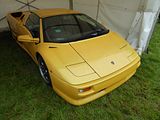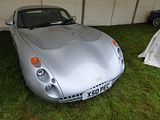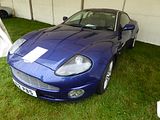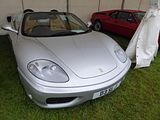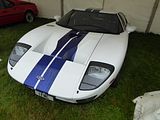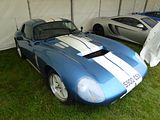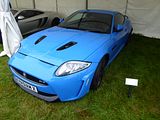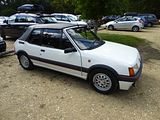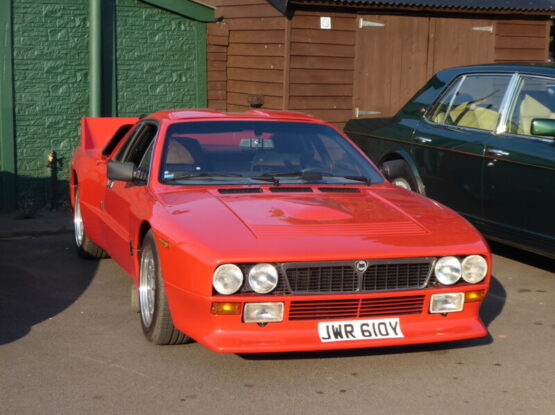The car enthusiast is somewhat spoiled for choice in the UK, with a vast number of events that they can attend. Every weekend, almost year around, there are more than a few vying for attention and a space in he diary. Choosing can get quite difficult as my own experience has taught me that once you discover a “good” event, it is worth going back in successive years as there will be a mixture of plenty of things that are different as well as all the things that made it so agreeable on first encounter. So every year, the “must do” events list in my personal schedule seems to get longer and longer, leaving little space to try out events or venues that I’ve not previously attended. One of the venues that I’ve not visited much, which has its own comprehensive series of themed days throughout the summer events, is the National Motor Museum at Beaulieu, in the New Forest, and although many of the “Simply…….” days that they run sound appealing, I’ve always struggled to prioritise them over other competing attractions. But in mid August, there was a notable gap in the plan, which I decided to fill by heading down to try out one of their special days. In fact this one was called the “Supercar Showdown”, and it has been run for the past four years, with previous reports suggesting that it attracts a huge number of super- and hypercars, so it promised much in its 2015 instantiation. I bought a ticket in advance, which is probably just as well, as for once the weather forecasters got it absolutely right, and on the day of the event, I got up to see that it was absolutely chucking it down, to the extent that it would have been easy to write off the cost of the ticket and stay at home. It was only the suggestion that the rain would move away by lunchtime which persuaded me to set off. As I drove down the A36 past Warminster towards Salisbury, the rain got worse and worse, which did cause me to wonder how many owners would actually have taken their treasured possessions to the event. I did console myself with the thought that should the answer to that question be “very few”, then the site does boast a large and fascinating museum, which I have not visited for some time, so should the worst come to the worst, there would still be something interesting to do, meaning the journey would not be in vain. It was still raining hard when I arrived, and because I got parked up before the gates were open to the public, there was quite a long wait in the rain, which was probably the worst part of the day. Bang on 10am, public admittance started, and from the shelter of my umbrella, I was able to go and see what was on show. Much to my relief, the answer was “lots”, with over 350 vehicles in display, a significant increase in the 30 or so that apparently attended the first of these events in 2011. A couple of hours later, the clouds did, as forecast, move away, and the ground started to dry up, which was a relief, and by mid afternoon, the sun even started to turn the sky a nice shade of blue, so you will be able to tell from the photos in this report, almost the sequence in which they were taken, by how damp everything is!
THE SUPERCARS
The supercars were the reason for going, of course. And I was not disappointed. A large group of cars, of differing makes and models were parked up in the central area of the event, and then around the edges of this were marque specific parking areas for cars brought along by Owners Clubs and supporting dealers. Those cars in the central area were then moved a couple of times during the day, where in small groups they were assembled at one end of a long straight piece of road, which had a couple of large straw-bale chicanes part way down, creating a nice little area for attendees to see, and perhaps more importantly, hear, the cars in action. By the time the first runs were conducted, the rain had stopped, but it was still wet on the road, but by the afternoon, no doubt helped by a bit of heat from the wide tyres of some of these cars, it was more or less dry. Further interest was provided by the chance for the public to vote for their favourite car of the day in the “Peoples’ Choice” Awards.
ARIEL
Considering the weather conditions, plenty of plaudits should go to the owners of both of these Atom models, as these machines have absolutely no weather protection at all. Getting wet would have been a given, but I would imagine that just being able to see with all the spray being generated would have been a far harder challenge to address.
ASTON MARTIN
A combination of cars supplied by supporting dealer Jardines, plus the Aston Martin Owners Club meant that there examples of most of the current models here, with the latest Vanquish, the 4 door Rapide, the soon to be superceded DB9 in Coupe and Volante guise, as well as the smaller Vantage range with V8, V12 and the slightly brash N430 models all on show.
There were also a couple of older models displayed, with a DB7 V12 and a DB6 catching my eye
AUDI
Audi’s supercar is the R8, one of those cars which you really can live with every day, and yet which when the opportunity arises allows the lucky owners to exploit its explosive performance and all the other attributes of the genre. A couple of Spider models were joined by a V10 engined Coupe
Also representing the Four Rings were a couple of RS badged models. Gone are the days when Audi have just one model with the iconic RS moniker on it in the range at any given time, as these days there are RS versions of several of the different cars. Seen here were two of them: the RS5 Coupe and the thunderous RS7.
BENTLEY
As well as the latest Mulsanne saloon, there were several examples of the Continental GT Coupe
BMW
There were three of the futuristic looking i8 here, and these were among the most crowd-pulling cars of the day. The idea that a car that definitely deserves its place in the ranks of the supercars can be powered by a 1500cc petrol engine (and a rather more significant electric motor, of course) is one that intrigues people almost as much as the external lines of the car.
There was also an i3, the far smaller electric powered hatch that is gradually finding customers who are attracted to the low running costs from its electric powerplant, and who like the practicality afforded by the boxy styling.
M cars were represented by the latest M4 Coupe and its predecessor, the E92 model M3
Final BMW was one of the Z8, the short-lived retro-styled luxury grand tourer that is worth at least much now as when it was new. It was a lot of money then, and – if you can find one of the 5703 examples that were built.
BUGATTI
Attracting perhaps more attention than any other car, not surprisingly, was this Veyron. Surprisingly, though it did not win the Peoples’ Choice Award.
DODGE
This would be the first chance for many of the visitors to see and hear a Hellcat, the utterly bonkers 707bhp version of Dodge’s Challenger. This one arrived in the UK just three weeks before the even. It was sufficiently popular that it was one of two runners up in the Peoples’ Choice Awards. And before you ask, although straight line speed and ferocious acceleration, in the best US muscle car tradition are particularly impressive, it is a lot better in the corners than you might imagine, we are told.
Better known, and far more “in your face” was this Viper GTS Coupe
FERRARI
There were not that many Ferraris here. But that was not entirely unexpected. Well, it was raining in the morning, and Ferrari owners seem very reticent at coming to events when it is raining, as I have observed over the past few years. Less surprising were the types of Ferrari that were present, with several of the about to be superceded 458 range the best represented. As well as Coupe and Spider models, there was a rather nice Speciale here as well.
Also well represented were the 458’s predecessor, the 360 Modena and F430 range, with closed Coupe and open topped Spider models both present.
More of a surprise, perhaps was that there were three of the big 612 Scaglietti here. When new this car did not have the rapturous adulation that most other models with the Prancing Horse badge on their snout receive, though I am sure that as the years go buy, increasing numbers will appreciate this model.
The California is another car which did not quite hit the spot in its first incarnation in 2009, though the changes that make a California T seem to have addressed almost everything which occasioned negative comment. This was not a T model, but the earlier car.
Final Ferrari model present in this part of the event was the 599 GTB, with a couple of different examples of this elegant V12 grand tourer here.
FORD
Ford Heritage brought along their Ford Transit Supervan 3. This might look like a Transit, but it is built on a Ford C100 racing chassis and there is a 3.0 V6 Cosworth engine to power it. It did not actually start out that way. Just as had been the case for the previous two Supervans, which had been created as promotional vehicles, with the outline of the familiar Transit van concealing racing car componentry underneath, in 1994, to promote the new Mark 5 Transit, Ford rebuilt Supervan 2 as a new Supervan 3. This was the first time that Supervan had been used to promote a new model, rather than a model already nearing its end of life. A seven-eighths scale reduced replica of the new bodyshell was fitted, together with a new engine, a Cosworth HB. The work was carried out by DRL Engineering of Suffolk This version also had the longest promotional lifespan, appearing in public until 2001. With several liveries in Ford’s blue and white over the years, its final appearance was in Royal Mail red, celebrating Ford’s new contract to supply their vans, taking over from a long arrangement with Leyland DAF Vans. In 2004 a refurbishment was announced. The engine was replaced with a more practical Ford-Cosworth Pro Sports 3000 V6 engine, and the 1984 Ford Motorsport blue and white livery was restored. This work was carried out by Sporting and Historic Car Engineers of Bicester. In 2007 it was decided that Supervan 3’s chassis be rebuilt into a C100 and used for historic sports car racing. It did not take to the demo straight on this occasion, but still drew the crowds as a static exhibit.
Ford really hit the spot with the fifth generation Mustang that they launched in 2004, which combined retro styling cues with some modern touches, all offered at an affordable price. Over the next 10 years, not only did the standard model evolve considerably with changes to the appearance and the mechanical underpinnings, but a wide variety of special versions were produced, some with Ford’s official backing, and some without. Although this generation Mustang was never officially sold in the UK, quite a few of them have found their way here, such as this one.
GINETTA
When the latest Ginetta models appeared in 2005, many were surprised, as they thought that this small British marque had ceased production long ago. But that was never the case, as the firm, founded in 1958 has, throughout its history, had periods of producing product and plenty when it has not, with several reoganisations and changes of ownership contributing to this rather roller-coaster approach to production. In 2005, the company was acquired by Lawrence Tomlinson in 2005, and work began on a car which was launched as the Ginetta G50. With a 3.5 litre V6 engine, producing 300 bhp, the new model competed in its first race in the European GT4 Cup in Nogaro France, finishing second. Hot off the back of this success, the G50 enjoyed its official launch at the Autosport International Show in early 2008 alongside its sister car, the Ginetta G50 GT4. Together, they have become Ginetta’s biggest selling machines, and have raced (and won) in almost every continent, including the Dubai 24 Hour endurance race in 2012 with Optimum Motorsport. Keen to expand his business into road cars, in March 2010, Tomlinson acquired the Somerset-based sports car manufacturer Farbio, and in doing so inherited the F400, which was subsequently redesigned, redeveloped and rebranded from the Farbio Marque, into a Ginetta G60; a two-door mid-engined powerhouse which shares the same 3.7 litre V6 engine as its G55 GT3 stablemate which packs a real punch, capable of 0 – 60 mph in 4.9 seconds, with a top speed of 165 mph. Tomlinson was eager to extend his brand downwards, too, by creating a newer, safer car for the existing Ginetta Junior series and in doing so, replaced the old Ginetta G20 race car with a G40J. Staying true to his deep-rooted belief in nurturing young racing talent through the motorsport ladder, today’s G40J is designed to give aspiring young racing drivers the chance to make their first steps into the world of motorsport behind the wheel of a 1800cc, 100 bhp racing car, whilst a full integral FIA approved roll cage and fibre-glass shell ensures the 14- to 17-year-old drivers enjoy safe, controlled racing. Following the success of the G40J, Ginetta decided to introduce a Ginetta G40 Challenge car for the adult racers in its Challenge series. With the same engine as its little sister, the G40 Challenge car puts out 165 bhp as it competes against the existing G20 models. Today, the car features heavily in the Total Quartz Ginetta GT5 Challenge; one of the most popular, cost-effective but competitive racing series in Britain. With strong demand for a G40 race car, Ginetta unveiled its second road car – the Ginetta G40R – in 2011, designed to mimic the Walklett brothers’ original vision of ‘a race car for the road’. Capable of 0-60 in 5.8 seconds, the G40R shares a number of characteristics with its racing siblings, representing the culmination of Ginetta’s racing pedigree translated into a road car. Although the model has been around for 4 years now, I was surprised at how many people seemed puzzled when they came across this bright orange machine, not knowing what it was.
There was a second Ginetta model here, too, the earlier G27, a car that was produced in the 1990s, based on Ford parts.
JAGUAR
There is little doubt that Jaguar hit the proverbial spot with the F Type. Both Coupe and Cabrio, and there was one of each here, are among the best looking cars on sale at present, and the noise that they make, even in V6 form, is also about as good as it gets these days.
LAMBORGHINI
The Lamborghini Owners Club did the event proud, with far more examples of this marque present than of rival Ferrari (well, it was raining, and it is well known that Ferrari owners are particularly reluctant to take their cars out in such conditions!). Most numerous model for now was the Gallardo, reflecting the fact that this car was sold for more than 10 years and in excess of 10,000 of them were built. During that time, a bewildering array of models were offered, in both fixed head and open topped Spider guise, and there were examples of just about every variant here, including the Superleggera and the Performante.
With buoyant sales, running at record levels, it will not be all that long before the latest “entry level” model will start to outnumber its predecessor. The Huracan may be more civilised and easier to live with than its predecessor, but it still looks very much a Lamborghini and there were more than a dozen of these cars on display. It was actually one of these models which won the “Peoples’ Choice” award, a Huracan in a vibrant and eye-catching Limited Edition colour, Verde Mantis. The owner, Martin Brown from Alton, had only taken delivery of the car five weeks earlier, replacing his previous Lamborghini, a Murcielago, and it turned out that his every day vehicle is a humble Ford Transit.
V12s were best represented by the Murcielago, with a number of these present, including one of the SV models
Also present was a lone example of the Countach, a car which stops more or less everyone in their tracks even now, over 40 years since the Gandini shape was first seen on the road.
Completing the Lamborghini line up were a couple of Aventador models.
LANCIA
Delta Integrale
LOTUS
The Lotus Owners Club had a strong presence, too, with lots of classic models from this much loved marque on show. Most numerous were the Esprits, with plenty of the first generation Giugiaro cars as well as a couple of the Peter Stevens restyle
From the 1960s and early 1970s were a Europa, an Elan Sprint and no fewer than three examples of the Elan Plus 2, the larger model with two small rear seats squeezed into the longer wheelbase car that was sold between 1967 and 1973.
As well as an S2 version of the front wheel drive Elan, there were also a number of Elise models in the first and second generation guise and a few of the Evora
I was intrigued to find this car among the Lotus models. I recognised it instantly as a Nova, and I was unsure of the Lotus connection, apart from the badge on the back, as to my knowledge, and confirmed by subsequent research, the car was essentially a dramatically styled fibreglass shell on a VW Beetle chassis and mechanicals. Styled by Richard Oakes with engineering by Phil Sayers, this two seater, with an opening canopy that combined roof and doors into one was produced by Automotive Design and Development Ltd (ADD), an English company, based in Southampton from 1971 to 1973 after which it moved to Accrington, Lancashire until 1975. ADD then failed and the rights to the Nova were bought by Nova Cars in Mirfield, West Yorkshire in 1978, which continued until 1990. A low volume production run was made by Nova Developments in Cornwall in the 90’s and the company was sold to India based Aerotec Nova around 1996. Licensed versions of the Nova have been built in Austria as the Ledl, in Australia as the Purvis Eureka, in France as the Défi, in Italy as the Totem and Puma, in New Zealand as the Scorpion, in South Africa as the Eagle, in Switzerland as the Gryff, in the United States as the Sterling and Sovran and in Zimbabwe as the Tarantula. There have also been numerous un-licensed copies. Some versions featured pop-up head lamps and gull-wing doors, but the basic silhouette remained the same. Versions of the Nova have appeared in number of films, including Cannonball Run II, Death Race 2000, Winners and Sinners, Condorman and Mani Di Velluto. Although the majority of these cars had Beetle power, I am aware of at least one with an Alfa engine in it, so I am guessing that the reason for the Lotus badges on this one are because it has a Lotus engine – guessing the 1588cc Twin Cam unit that was used in the Lotus-Cortina as well as the Elan and Europa of the 1960s and 1970s. Although I could not turn up any reference to this particular car, I did find evidence of others that were so equipped.
There was an example of the current Elise on show in the central area of the event.
MARCOS
This was the first time that the Marcos Owners Club had supported the event, and they made it a strong start with more than 20 examples of the marque to have a look at. Oldest car on show was one of the 3 litre GT models from 1970.
The rest of the cars were from the period of rebirth, ranging from the late 1980s Mantara to several of the rather bonkers looking LM400GT cars which were built alongside the racing versions that Marcos used to compete in GT Racing.
McLAREN
There were two very long lines of McLaren road cars in addition to the one MP4 12C that was parked up in the central area. With a mix of 12C and 650S models, in both Coupe and Spider guises, they made for a very colourful sight indeed.
MERCEDES-BENZ
Not surprisingly, all fiver Mercedes models in the event bore AMG badges. Two of them were the recently superceded C63 generation, with a Saloon and a Coupe present, and the others were the also recently discontinued SLS AMG Coupe, the still current A45 AMG and an older CL63 model.
MG
Unless you go back to the 1930s. when MG made a few high performance cars which had racing more in mind than road use, then only model to get anywhere supercar status that bears the famous roundel is the SV. This car came about after MG-Rover acquired Qvale of Italy. Taking the Qvale Mangusta as a base, a car which had been designed, but not quite made production, MG Rover allocated the project code X80 and set up a subsidiary company, MG X80 Ltd., to produce their new model. A big factor behind the project was that was seen as having the potential sales in the United States, as the Mangusta had already been homologated for the American market. The MG X80 was originally revealed as a concept car in 2001. However, the styling was considered too sedate, so when the production model, now renamed MG XPower SV, was eventually launched the following year, designer Peter Stevens had made the car’s styling more aggressive. The conversion from a clay model to a production car, including all requirements, was done in just 300 days by the Swedish company Caran. The production process was complex, partly caused by the use of carbon fibre to make the body panels. The basic body parts were made in the UK by SP Systems and then shipped to Belco Avia near Turin for assembly into body panels. These were then assembled into a complete body shell and fitted onto the box frame chassis and running gear and shipped to MG Rover’s Longbridge factory to be trimmed and finished. Several of the cars’ exterior and interior parts were borrowed from current and past Fiat models. The headlights, for example, were taken from a Punto Mk.2 and the rear lights borrowed from a Fiat Coupe. The goal had been to get a street price of under £100,000, and on launch, the base model came in well under that at £65,000, and even the uprated XPower SV-R model was priced at £83,000. Those were ambitious prices for a car bearing MG badges, though, so not surprisingly, sales were slow. It is understood that just 82 cars were produced excluding the 4 ‘XP’ pre-production prototypes. This included a few pre-production and show cars which were later dismantled, before production was stopped due to lack of sales. Most were sold to private owners, with the final ones being sold to customers in early 2008.
MISC
I am not quite sure what this is. I know what its designer would like you to think it is, but with proportions that are rather different from the Ferrari 250 GTO that inspired the design, it is in no danger of being confused with the real thing. I first saw it on the road approaching Beaulieu, as the car was just behind me for a few miles, then it vanished, taking a different route to the venue. There were no clues on the car itself as to who had produced it.
MORGAN
The Aero 8 was the first new design from the Malvern Link company since the ill-fated, and short-lived Plus Four Plus of 1963. This one did not get a universally positive reaction at launch, either, with the cross-eyed look caused by the headlights being the cause of a lot of those comments, but there was no doubting the performance available thanks to the 4.6 litre BMW V8 engine.
NISSAN
Local dealer Westover Nissan had a display of three new cars. You could hardly call at least two of them “supercars”, the Juke Nismo RS and the 370Z Nismo, though they do definitely have performance enhancements over the lesser models in their respective ranges. Even so, all three were attracting plenty of interest.
There was a further example of the GT-R in the main display, which was to be seen in action on the demo straight during the day.
NOBLE
M12 GTO-3
PORSCHE
Stand out Porsche for most people was the Carrera GT which had a prominent place in the central supercar display. The development of this car can be traced back to the 911 GT1 and LMP1-98 racing cars of the late 1990s, the career of both which had ended in 1998 not least due to FIA and ACO rule changes in 1998. Porsche had been planning a new Le Mans prototype for 1999, with the car initially intended to use a turbocharged flat-6, but later redesigned to use a new V10 engine, pushing the project back to planned completion in 2000. The V10 was a unit secretly built by Porsche for the Footwork Formula One team in 1992, but later shelved. The engine was resurrected for the Le Mans prototype and increased in size to 5.7 litres. The project was cancelled after two days of testing of the first car, in mid-1999, mostly due to Porsche’s wish to build the Cayenne SUV with involvement from Volkswagen and Audi, thus requiring engineering expertise to be pulled from the motorsports division. It was also speculated that VW-Audi chairman Ferdinand Piëch wanted Audi’s new Le Mans Prototype, the Audi R8 not to face competition from Porsche in 2004. However, Porsche did keep part of the project alive by using the 5.5 litre V10 from the prototype in a concept car shown at the 2000 Paris Motor Show, mainly in an attempt to draw attention to their display. Surprising interest in the vehicle and an influx of revenue provided from the Cayenne helped Porsche decide to produce the car, and development started on a road-legal version that would be produced in small numbers at Porsche’s new manufacturing facility in Leipzig. Porsche started a production run of Carrera GTs in 2004. Originally a production run of 1,500 cars was planned. However, Porsche announced in August 2005 that it would not continue production of the Carrera GT through to 2006, citing discontinuation was due to changing airbag regulations in the United States. By the end of production on May 6, 2006, more than 1,270 GTs had been sold, with at least 604 of those being in North America.
Also in the central display area was this 911 Turbo
The Porsche Owners Club had a large area for displaying a wide variety of cars. With the exception of a lone Cayman, they were all 911 models, with an almost bewildering array of different variants of each of the 911 generations, showing just how many different models have been offered especially in recent years. Further examples of the 911 were to be seen elsewhere in the event as well.
This 924 GTS belongs to racing legend Derek Bell, who has owned since it was given to him by Porsche when it was new. Just 59 GTS models were made by the Stuttgart factory. These are more powerful than the 924 Carrera GT thanks largely to running increased boost and are easily distinguished by the perspex headlamp covers replacing the pop-up headlights on the GT, and an intercooler in front of the engine rather than on top of it. 15 of the 59 were Club Sport cars, which had a roll cage and were even more powerful and lighter than the GTS.
RADICAL
Creating a lot of attention, not least because of the striking yellow paint. but also as it was parked up in an area by itself, and also because of the incredible noise it made when powered up, was the new Radical RXC 500 Twin Turbo Eco-Boost. This is the first, and so far, only, road registered Radical RXC 500 in the UK. Developing 540bhp weighing less than 950kg, it is the quickest road legal car, having recently proven quicker than the Porsche 918 around a well-known UK track. It is understood that it will be taken to Nurburgring when speed limits are lifted, to try to achieve the quickest time for any road tyre equipped UK manufactured car. When expressed in those terms, the price tag sounds almost like a bargain!
There was a second Radical here, an SR3. Radical Sportscars had been founded in January 1997 by amateur drivers and engineers Mick Hyde and Phil Abbott, who built open-cockpit sportscars which could be registered for road use and run on a track without modification. The second model they devised was this, the SR3. Initially developed to compete in international racing, such as the FIA’s C3 class, the SR3 uses a Suzuki-based engine tuned by Powertec (now RPE) in 1300 cc or 1500 cc versions and a maximum of 260 hp in the latter. A six-speed sequential gearbox was developed specifically for the car to improve performance. As the SR3 RSX, this is Radical’s most popular mode, with over 800 having been made. cis have been built. The $109,950 car is built on a carbon-steel spaceframe chassis, and uses an RPE-tuned Suzuki Generation 3 4-cylinder, 1500cc DOHC motorcycle engine for power. It produces 210 horsepower (155 kW) and can get the SR3 RSX to 60 mph in just 3.1 seconds and on to 155 mph. The SR3 could also be made road legal in the United Kingdom with the addition of indicators, a hand brake, a catalytic converter, and road legal tyres. Radical took this a stage further with the SR3 SL, which is a road legal track-day car that uses an RPE-Ford Ecoboost 2000cc engine, tuned to 300 hp for road use in the UK and Europe. Launched at £67,750, the SL includes a six-speed paddleshift transmission and bespoke cockpit including tailor seats, electric mirrors, a heater and courtesy lighting. It is capable of 0 to 60 in 3.4 seconds and 161 miles per hour. Road legal it may be, but there’s not much in the way of weather protection, so kudos to the driver of this one, just like the Ariel Atom cars also seen at the event.
TVR
This Sagaris, one of the last TVRs made before the end of production in 2005 was another prize winner, claiming the runner up spot in the “Peoples’ Choice”.
Other TVR models displayed included a Tuscan, a Cerbera, a Chimaera and a T350C
HIGH END MOTORING
This was a special display which had been created for both the events taking place over the weekend. The idea was to include an example of a car from every year over the last 100, with a focus on “high end” models, showing how performance and luxury motoring has developed during the last century. They could not all be “supercars”, in keeping with the theme of the day, as that term only really came into existence at some point in the 1970s, and whilst it was then retrospectively applied back to a few cars that pre-date its adoption, such as the Lamborghini Miura of the 1960s, anything that came before that era is not really thought of as a “supercar” even it had the attributes of very high performance (for its time), a high price and relative exclusivity. A very large marquee had been erected, and the cars in the sequence up to the early 1970s were all inside it, meaning that this was particularly popular early in the day as it provided shelter from the rain. More recent cars were also under cover, with a couple of long lines of marquee like material, but whilst this provided shelter for the cars, those looking at them needed to take cover under their umbrellas during the rainy morning. Although the display inside the large marquee was more or less complete, there were a few gaps in the outside collection, suggesting that perhaps some of the cars that had been present on the previous day had departed. Even so, this was an impressive assembly of some very desirable cars indeed.
There were a couple of examples of the Vauxhall 30/98, a large and powerful sports car that was made from 1913 to 1927, although it is believed that only 13 30/98s were made before war intervened and these were all for selected drivers. The last of these pre war cars, was built in 1915 for Percy Kidner a joint Managing Director of Vauxhall. Actual series production began in 1919. Also known as the E Type, the 30/98 name is believed to have been coined because the car had an output of 30 bhp at 1,000 rpm and 98 bhp at 3,000 rpm, though another explanation is that it had an RAC horsepower rating of 30 and a cylinder bore of 98 mm. Perhaps the most likely of all is that there was then a popular but heavier slower Mercedes 38/90. However it was found, the name 30-98 looked and sounded so well and the car proved popular. The 30/98s used the earlier Prince Henry chassis, but were distinguished by having more-or-less flat rather than V-shaped radiators. Laurence Pomeroy took the Prince Henry L-head side-valve engine, bored it out 3 mm, then cold-stretched the crankshaft throws 5 mm using a steam power hammer to lengthen the stroke.The camshaft was given a new chain drive at the front of the engine, high lift cams and new tappet clearances. The Prince Henry chassis was slightly modified and the whole given a narrow alloy four-seater body, a pair of alloy wings (front mudguards) and no doors. The first 30/98 was constructed at the behest of car dealer and motor sport competitor, Joseph Higginson—inventor of the Autovac fuel lifter—who won the Shelsley Walsh hill-climb motoring competition on 7 June 1913 in his new Vauxhall, setting a hill record in the process, having in previous weeks made fastest time of the day at Waddington Pike and Aston Clinton, but these were not racing machines but fast touring cars. The exhaust made a tranquilising rumble, there was no howl, no shriek, no wail, but there was the quiet satisfaction of knowing that if stripped for action, the car could lap Brooklands at 100 mph, and its makers guaranteed that. Most of them were built with a 4 seater open tourer body, though other body styles were produced as well.
1928 Packard 645 Dietrich
1929 Lagonda 3 litre
1930 Morgan
1931 Alvis TJ 12/50
1932 Armstrong Siddeley Twelve
1932 Bentley 4.5 litre Supercharged
1933 Triumph 9 Southern Cross
1934 MG PA
Intended to fit in the display as a 1936 Jaguar SS100, thjs is not quite the real deal, as it is in fact a much more recent creation, a Suffolk SS100.
1937 Lagonda V12
1952 Jaguar XK120
This fabulous looking 1955 Austin Healey 100M had been the winner of the “Peoples’ Choice”award at the “Simply Classics” event the day before. Finished in the eye-catching colours of Florida Green over Old English White, it was the Earls Court Motor Show demonstration car and used for test-drives by journalists. The current owner acquired the car four years ago at auction, and he uses it sparingly. Its condition was absolutely stunning.
1957 Aston Martin DB2/4 Series III
1959 Jaguar XK150 Fixed Head Coupe
1960 Chevrolet Corvette
1961 Aston Martin DB4 Series IV
1962 Porsche 356C
1963 Aston Martin DB5
Perhaps needing more of an introduction than most of the other cars in this display is the 1964 Triumph Fury prototype. The first monocoque sports car to be made by Triumph, the body was styled by Giovanni Michelotti, as had been the case with other Triumphs from the preceding few years and the car used components from the 2000 saloon of 1963, including its 2 litre 6-cylinder engine of the time, although it is possible that the larger 2500cc 6-cylinder or the 3 litre Triumph V8 that was under development for use in the car that emerged years later as the Stag was possibly intended, had the car gone into production. Sadly, it did not, as this prototype lost out to a continuation of the separate-chassis TR series, with the Triumph TR5 being introduced in August 1967. The decision by Triumph to not develop the car was due in part to the reluctance to invest in new production line and tooling facilities required to manufacture the model, in favour of continuing with the simpler manufacturing of the separate body and chassis design of the TR series. It is a real shame that this car did not proceed, as within months of its development, a number of other European rivals appeared, such as the Alfa Romeo 1600 Duetto and the Fiat 124 Spider, which made the use of the old TR platform seem even more old-fashioned. Although sales of the TR held up for a while, and there was clearly reluctance in the BMC and later BL organisation to create an in-house rival to the MGB, it is clear that this curvaceous and rather pretty looking model could have sold well. Thankfully, the prototype does still exist, owned by JHW Classics since 2009, and it does get shown in public reasonably frequently.
1965 Aston Martin DB5 Volante
1965 Mercedes 600
1966 Mercedes 300SE Cabrio
1966 Jaguar E-Type Series 1
1968 Iso Grifo
1969 Ford Mustang GT350
1970 Aston Martin DB6 Series 2
This 1972 Lamborghini Miura SV was once the property of Rod Stewart. These days it is owned by a gent called Niall Holden who also owns the ex Eric Clapton Ferrari GTO depicted earlier in this report
1973 Lamborghini Jarama
1974 Jaguar E Type Series 3 Coupe
There were two examples of the 1975 BMW 3.0 CSL, one a road-going car and one ready for the track
There were two examples of the BMW M1. One of them was tagged as 1978, though the reality is that production of the car did not really get underway until the following year.
Built in 1981, this is the very last Bentley T2 that was made, as a successor, the Mulsanne, had been announced at the 1980 British Motor Show
1982 Aston Martin V8 Coupe
This 1984 Ferrari 280 GTO was bought new by a certain Eric Clapton
1985 Lamborghini Countach 5000Qv
1986 Ferrari 328 GTS
1986 Ford RS200
1987 Ferrari F40
1989 Porsche 911 Turbo LE
1991 Marcos LM500
1992 Ferrari 348 tb
1994 Jaguar XJ220
1996 Lamborghini Diablo VT Spider
1999 TVR Tuscan
2001 Aston Martin DB7
2003 Aston Martin Vanquish
2005 Ford GT
replica AC Cobra Daytona Coupe
2010 Jaguar XKR-S
2012 McLaren MP4 12C
2014 KTM X-Bow
Bringing things right up to date, and indeed with more than a foretaste of the future was this 2015 BMW i8.
IN THE CAR PARK
Parking at Beaulieu is in a series of small clearings in among the trees, so it would take quite a long time to wander around to see what is of interest there. By the time I got back to my car, most people had gone, and the only notable car in the area where I was parked up was this rather nice Peugeot 205 CTi,
The weather clearly was not deterrent either to owners or visitors. The venue reported that more than 5000 of the latter came, which was a good turn-out, though at no time did the event feel crowded, as can sometimes happen when super cars are gathered together. Having tried this event for the first time in 2015, I have a feeling that it is yet another to add to the long list of ones that gets priority when planning the 2016 schedule, with a provisional date of 21st August already announced. I will try to get back to Beaulieu before then, too. Not only are there plenty of other interesting sounding events, but I never did get inside the museum to see what had changed since my last visit there.

